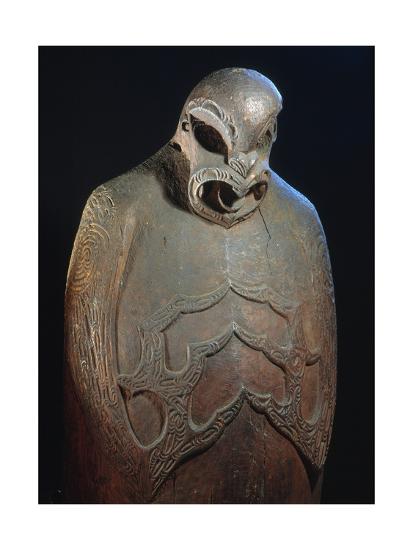Maori definitions and meanings
Maori Definitions and Meanings |
https://www.heaokotahi.co.nz/blog-1/2017/8/21/episode-5-fact-2-uhita-mokoon |
Iwi
Iwi is the Maori word for bloodline or lineage. I've chosen this image to illustrate the word Iwi as the moko has traditionally been used to not only represent someones status, career and whanau, but their lineage, their Iwi. From the line width to the curves in the Koro patterns little detail has significant meaning to the person adorning.Pataka
A Pataka is a small house (similar to a Marae in appearance) used to store items and necessities such as food, water, and general supplies Maori used these throughout their everyday lives before New Zealand was colonized in 1642. The Pataka was also used as a place to store precious items such as green stone, cloaks, weaponry etc. things that were considered important by the maori people or a specific tribes, these pataka were often distinguished between the ones that stored the everyday necessities through their detailing and carvings present on the pataka which signified its importance as storage for taonga.Rauawa
The Rauawa is a part of the waka that acts as both a decorative piece and to elevate the height of the boat which added greater free board and improved seaworthiness.
Moko
Kowhaiwhai
 Kowhaiwhai are Maori motifs that are often used in art, advertising and design representing New Zealand. Koru and kape form the basis of the geometrical kowhaiwhai patterns. The kape is shaped like a crescent moon with the addition of regularly shaped circles. Kowhaiwhai patterns are traditionally painted in whare tipuna (meeting houses), pataka (storehouses), on the prow of a waka (canoe) or on many forms of carving such as boat paddles or water containers. As well as being decorative, kowhaiwhai patterns also help to tell a story.
Kowhaiwhai are Maori motifs that are often used in art, advertising and design representing New Zealand. Koru and kape form the basis of the geometrical kowhaiwhai patterns. The kape is shaped like a crescent moon with the addition of regularly shaped circles. Kowhaiwhai patterns are traditionally painted in whare tipuna (meeting houses), pataka (storehouses), on the prow of a waka (canoe) or on many forms of carving such as boat paddles or water containers. As well as being decorative, kowhaiwhai patterns also help to tell a story.

TukuTuku
Tukutuku patterns vary considerably from iwi to iwi throughout the land. Certain designs are associated with particular iwi, some may have different names in different regions, or the names may be spelled in various ways. Many forms are related to mythologies, the stories about them vary from iwi to iwi. Some of the traditions are recorded here; this information has been drawn heavily from the works of Te Rangi Hiroa, and of John M. Mepham at Tokomaru Bay. Hiroa has suggested that the simpler forms are probably the older designs, later patterns developed pictorial forms, such as ancestral figures or other shapes. The Pūawaitanga o te Ringa designs make no claim to be authorative but have been inspired by traditional patterns; only the Aoraki panel has a simplified pictorial form.Bone Casket (Burial Chest)
 In the Northland region the bodies of senior people were exposed on a platform after death until the flesh had rotted away The bones were then cleaned, painted with red ochre and placed in a box, or waka tupapaku, inside a cave
In the Northland region the bodies of senior people were exposed on a platform after death until the flesh had rotted away The bones were then cleaned, painted with red ochre and placed in a box, or waka tupapaku, inside a cave Taniko
Tāniko is a method of decorative weaving used especially to decorate the borders of fine garments. The tāniko technique involves carrying behind the work threads not required for the pattern. As each colour is needed, it is brought to the front and wrapped around all the others. The tāniko weave is not used by other Polynesian groups, and is thought to have been developed by Māori some centuries ago. The meanings of some tāniko patterns have since been lost.
Raranga
 Raranga is a very old art that is practised in many parts of the world. The first Pacific settlers – the ancestors of Māori – brought this technique to Aotearoa New Zealand.
Raranga is a very old art that is practised in many parts of the world. The first Pacific settlers – the ancestors of Māori – brought this technique to Aotearoa New Zealand.Raranga was originally used to make practical items for survival, like rope, fishing nets, and baskets. Over time, it developed into a highly specialised art, and raranga artists began creating objects of great status. They even adapted the technique to make cloaks.
References
https://collections.tepapa.govt.nz/topic/3644
http://www.jps.auckland.ac.nz/document//Volume_34_1925/Volume_34%2C_No._136/A_Maori_burial_chest_in_the_National_Museum%2C_Melbourne%2C_by_W._J._Phillipps%2C_p_363-364/p1
https://collections.tepapa.govt.nz/topic/3647
https://teara.govt.nz/en/photograph/28783/waka-koiwi




Comments
Post a Comment